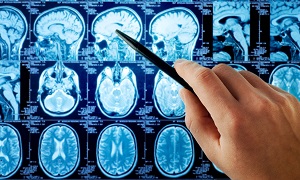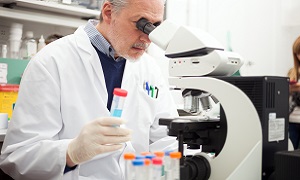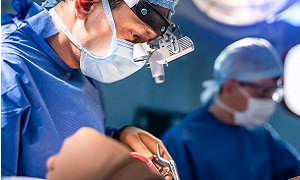Craniosynostosis
Craniosynostosis is a birth defect which involves one or more of the fibrous joints between the bones of the skull of the baby closing prematurely before the brain of the baby is fully formed. As brain growth continues, the head takes a misshapen appearance.
During infancy, the sutures normally remain flexible, which gives the baby’s brain time to grow. In the front of the skull, the sutures meet in the large soft spot on the top of the head. The anterior fontanel is the soft spot that one can feel just behind the forehead of the baby. The next largest is at the back or the posterior. Each side of the skull consists of a tiny fontanel.
Craniosynostosis generally involves the premature fusion of a single cranial suture, though sometimes it can involve more than one of the sutures in your baby’s skull. However, rarely, craniosynostosis can also be caused by the certain genetic syndrome.
Symptoms
Craniosynostosis can generally have the following signs:
- An unusual feel to the fontanel, or a soft spot on the infant’s skull
- A distorted shape in the skull
- The hard ridge forming along the suture, which is going to depend on the type of craniosynostosis
- Early disappearance of the fontanel
- Slower growth in the head as compared to the rest of the body
A newborn may have no signs or symptoms, but the condition can get noticeable during the first months of life.
A pediatrician can measure the head of the infant, and monitor their growth at every visit during the first year of life. This is done to spot this kind of condition.
Causes & risk factors
In most cases, the causes of craniosynostosis are not known. However, in many cases, it is related to genetic disorders.
Nonsyndromic craniosynostosis: This is known to be the most common type of craniosynostosis, its cause is yet unknown. However, it is believed to be a combination of genes as well as environmental factors.
Syndromic craniosynostosis: This is caused by certain genetic syndromes, like Apert syndrome, Crouzon syndrome, or Pfeiffer syndrome, which can affect your baby’s skull development. Usually, these syndromes include other physical features as well as health problems.
Diagnosis
Physical exam
Imaging studies
Genetic testing
Treatment
Conventional surgery
A craniofacial surgeon is a surgeon with a specialization in head and facial surgery as well as surgery of the jaw. A neurosurgeon is a surgeon who specializes in the brain and the nervous system.
A general anesthetic is going to be used during the procedure, and therefore the infant is not going to feel any pain.
The neurosurgeon will first create an incision across the top of the infant’s scalp and he/she will remove the areas of the skull that have become misshapen.
The craniofacial surgeon is then going to reform these sections of the skull after which he/she is going to place them back in the head. Then they sew up the opening with the help of dissolvable stitches.
This process can take several hours. The child is going to need to stay in the hospital for few days after the procedure. Although there is going to be a swelling in the face, this is not a need of concern.
Sometimes further surgery might be required, reshape the face, or if the craniosynostosis reappears.
After the procedure, a health professional is going to monitor the child’s skull development.
Endoscopic surgery
This option is less invasive, as compared to conventional surgery. In this procedure, your doctor will first create two tiny incisions in the scalp. He/she will then cut the sutures with the help of an endoscope. This is a flexible tube which the surgeon can use to check the inside of the body during the surgery.
This type of surgery is not just quicker, but it causes lesser bleeding and swelling. However, it is suitable only in certain cases, depending on the location of the fused suture.
Endoscopic surgery is suitable before the infant is of three months of age when the bones are still soft.
After surgery, the child may still require a molding helmet as it will help the head to grow into a suitable shape.
Complications
If left untreated, craniosynostosis can lead to multiple complications, which include the following:
- Permanent head and Facial deformity
- Social isolation and poor self-esteem
If left untreated, increased intracranial pressure can lead to the following:
- Developmental delays
- Seizures
- Cognitive impairment
- Eye movement disorders
- No energy or enthusiasm
- Blindness
- Death, in rare cases




